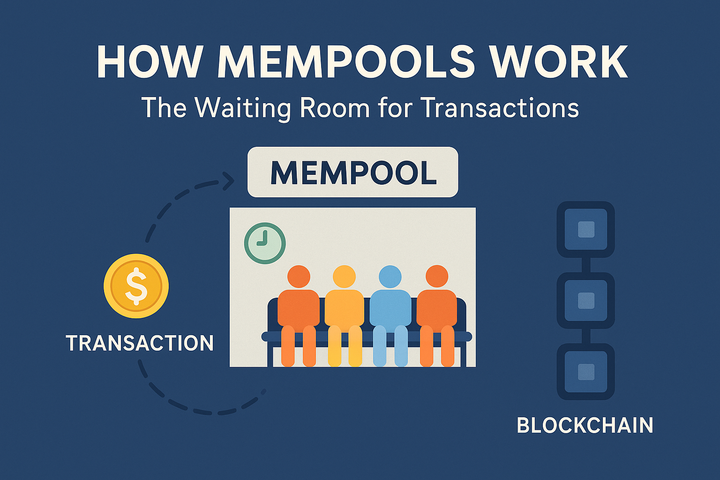Liquid Infra: Why Liquidity Routing Will Be the Hottest DeFi Meta

Introduction
As decentralized finance (DeFi) continues to evolve, liquidity routing has emerged as a critical component in optimizing asset flows across various platforms. This article delves into the concept of liquidity routing, its significance in the DeFi ecosystem, and why it is poised to become the hottest meta in the coming years. By examining the mechanisms, benefits, and challenges associated with liquidity routing, we aim to provide a comprehensive understanding of its role in enhancing liquidity and user experience in DeFi.
1. Understanding Liquidity Routing
1.1 What is Liquidity Routing?
Liquidity routing refers to the process of directing trades and asset flows through the most efficient paths across multiple liquidity sources. In the context of DeFi, this involves utilizing various decentralized exchanges (DEXs), liquidity pools, and lending platforms to ensure that users receive the best possible prices and minimal slippage when executing trades.
1.2 The Importance of Liquidity in DeFi
Liquidity is the lifeblood of any financial market, and DeFi is no exception. High liquidity ensures that users can buy and sell assets without significant price impact, leading to a more efficient market. Key reasons why liquidity is crucial in DeFi include:
- Price Stability: Adequate liquidity helps maintain stable prices, reducing volatility and enhancing user confidence.
- User Experience: Users are more likely to engage with platforms that offer seamless trading experiences, which are often facilitated by high liquidity.
- Market Depth: A liquid market allows for larger trades without causing drastic price changes, attracting institutional investors and larger participants.
2. The Mechanics of Liquidity Routing
1. Aggregation Protocols
Liquidity routing often involves the use of aggregation protocols that connect multiple DEXs and liquidity sources. These protocols analyze available liquidity and route trades to the platform that offers the best price. Examples of popular aggregation protocols include:
- 1inch: A decentralized exchange aggregator that splits orders across multiple DEXs to minimize slippage and optimize prices.
- Paraswap: Another DEX aggregator that provides users with the best rates by routing trades through various liquidity sources.
2. Automated Market Makers (AMMs)
AMMs play a significant role in liquidity routing by providing liquidity pools that facilitate trading without the need for traditional order books. Users can contribute to these pools and earn fees while traders can execute trades directly against the liquidity available. Key features of AMMs include:
- Constant Product Formula: Most AMMs, like Uniswap, use a constant product formula to determine prices based on the ratio of assets in the pool.
- Impermanent Loss: Liquidity providers face the risk of impermanent loss, which occurs when the price of assets in the pool diverges significantly from their original value.
3. Cross-Chain Liquidity Routing
As the DeFi ecosystem expands across multiple blockchains, cross-chain liquidity routing has become increasingly important. This involves utilizing bridges and interoperability protocols to access liquidity across different chains. Key considerations include:
- Security: Ensuring the security of cross-chain transactions is paramount to prevent exploits and maintain user trust.
- Efficiency: Cross-chain liquidity routing should minimize transaction costs and delays, providing users with a seamless experience.
3. Benefits of Liquidity Routing
1. Enhanced Price Discovery
Liquidity routing enables better price discovery by aggregating liquidity from multiple sources. This leads to more accurate pricing and reduces the chances of arbitrage opportunities, creating a more efficient market.
2. Reduced Slippage
By directing trades to the most liquid sources, liquidity routing minimizes slippage, ensuring that users receive the expected prices for their trades. This is particularly important for large trades, where slippage can significantly impact profitability.
3. Increased User Engagement
A seamless trading experience facilitated by liquidity routing encourages user engagement and participation in DeFi. Users are more likely to return to platforms that consistently offer the best prices and minimal slippage.
4. Capital Efficiency
Liquidity routing allows users to maximize the utility of their assets by directing them to the most efficient liquidity sources. This capital efficiency can lead to higher yields and better overall returns for users.
4. Challenges and Considerations
1. Complexity of Implementation
Implementing effective liquidity routing solutions can be complex, requiring sophisticated algorithms and infrastructure to analyze liquidity across multiple sources. Developers must navigate various technical challenges to create efficient routing mechanisms.
2. Security Risks
Liquidity routing involves multiple platforms and protocols, increasing the potential attack surface for malicious actors. Ensuring the security of user funds and transactions is critical to maintaining trust in the DeFi ecosystem.
3. Regulatory Considerations
As DeFi continues to grow, regulatory scrutiny may increase. Liquidity routing solutions must ensure compliance with existing regulations while fostering innovation and user participation.
4. Market Fragmentation
The proliferation of DEXs and liquidity sources can lead to market fragmentation, making it challenging for users to navigate the landscape. Aggregation protocols play a crucial role in addressing this issue, but ongoing efforts are needed to streamline the user experience.
5. Real-World Applications of Liquidity Routing
5.1 Case Study: A Liquidity Routing Protocol
To illustrate the potential of liquidity routing, consider a hypothetical liquidity routing protocol that aggregates liquidity from various DEXs and lending platforms. This protocol could offer users the following features:
- Dynamic Routing: The protocol analyzes real-time liquidity data to route trades to the most efficient sources, ensuring optimal prices and minimal slippage.
- Cross-Chain Capabilities: Users can access liquidity across multiple blockchains, allowing for greater flexibility and opportunities in trading.
- User -Friendly Interface: A streamlined interface enables users to execute trades effortlessly, enhancing the overall user experience.
5.2 Potential for Liquidity Routing in Lending
Liquidity routing can also be applied to lending protocols, allowing users to access the best borrowing rates across multiple platforms. By aggregating liquidity from various lending sources, users can maximize their borrowing potential and minimize costs.
6. The Future of Liquidity Routing in DeFi
Trends to Watch
- Increased Adoption of Aggregation Protocols: As users seek better trading experiences, the demand for aggregation protocols that facilitate liquidity routing will grow.
- Interoperability Initiatives: Collaborative efforts among DeFi protocols to enhance interoperability will pave the way for more efficient liquidity routing solutions.
- Regulatory Developments: As the DeFi landscape evolves, regulatory frameworks will need to adapt to address the challenges posed by liquidity routing.
- Community-Driven Innovations: The establishment of community-driven liquidity routing solutions will likely reflect the needs and preferences of users, fostering greater participation in DeFi.
Conclusion
Liquidity routing represents a transformative approach to optimizing asset flows in the DeFi ecosystem. By directing trades through the most efficient paths, liquidity routing enhances price discovery, reduces slippage, and improves user engagement. While challenges remain, the potential benefits for users and the DeFi landscape as a whole are significant. As the demand for efficient liquidity solutions continues to grow, liquidity routing is poised to become the hottest meta in decentralized finance.



Comments ()